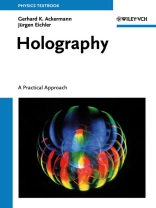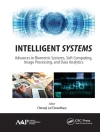Mit diesem Buch lernen Sie, wie Holographie wirklich funktioniert. Von der ‘einfachen’ Optik bis zu komplizierten Anwendungen wird alles praxisnah erklärt. Das Plus: Übungsaufgaben inkl. Lösungen und 20 ausführliche Versuchsanleitungen.
Tabela de Conteúdo
1 Introduction
2 General View of Holography
3 Fundamental Imaging Techniques in Holography
4 Holograms of Holographic Images
5 Optical Properties of Holographic Images
6 Types of Holograms
7 Optical Systems and Lasers for Holography
8 Basic Experiments in the Holographic Laboratory
9 Experimental Set-Ups for Single Beam Holography
10 Experimental Set-Ups for Split Beam Holography
11 Experimental Set-Ups for Holograms of Holographic Images
12 Other Methods in Holography
13 Properties of Holographic Emulsions
14 Recording Media for Holograms
15 Holographic Interferometry
16 Holographic Optical Elements
17 Security and Packaging
18 Holography and Information Technology
19 Holography and Communication
20 Holography Novel Art Medium
21 Holography in Technology and Architecture
Solutions to the Problems
Literature
Sobre o autor
Gerhard K. Ackermann received his Ph.D. degree in astronomy from the University of Heidelberg, Germany. He then accepted a post with IBM in Germany and the United States, working in research and development. Here, he discovered the ‘Narrow Channel Effect’ within MOS-FET. In 1976, he accepted a professorship for physics at the University of Applied Sciences in Berlin, where he later became Dean of the faculty of mathematics and physics and finally president of the University, which he remained until his retirement in 2002. Professor Ackermann taught and researched at laboratories and universities in Rio de Janeiro, Montevideo, and New York, and is still active working in holography. He is member of various societies, amongst others of the Russian Academy of Sciences.
Jürgen Eichler studied physics at the Universities of Berlin and Freiburg and received his Ph.D. degree in nuclear physics from the University of Karlsruhe, Germany. He then accepted a post with Bosch working on lasers and, at the same time, became a lecturer at the Technical University of Berlin. In 1973, he accepted a professorship for physics at the University of Applied Sciences in Berlin, where he later became head of the Laboratory for Laser Applications. For many years he has been doing research on topics of holography with Professor Ackermann. Professor Eichler was visiting professor at the University of Rio de Janeiro and at the University of California. He has published several books on holography, laser technology and medical engineering.












